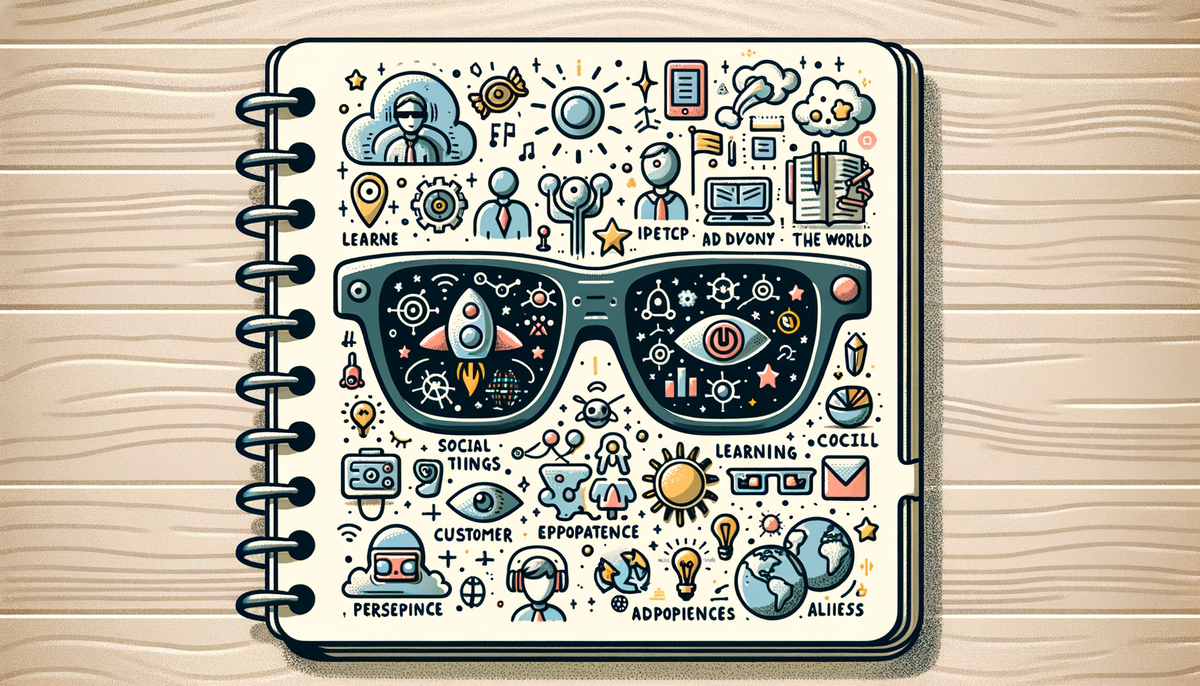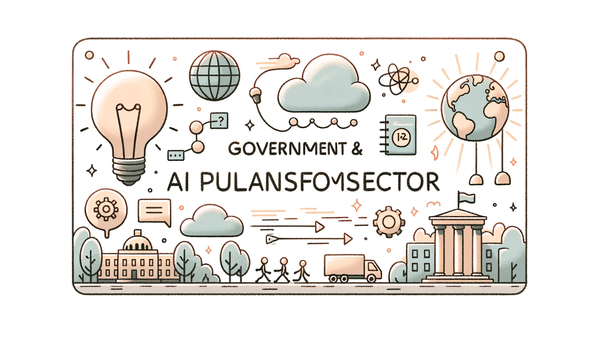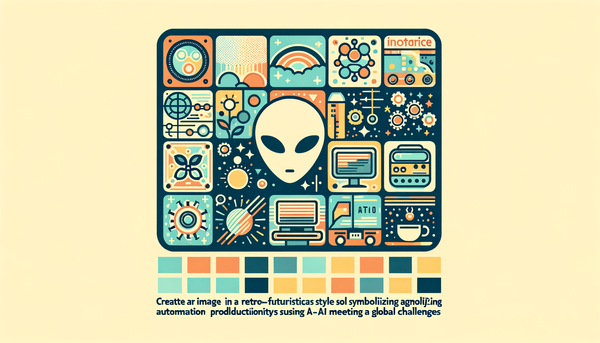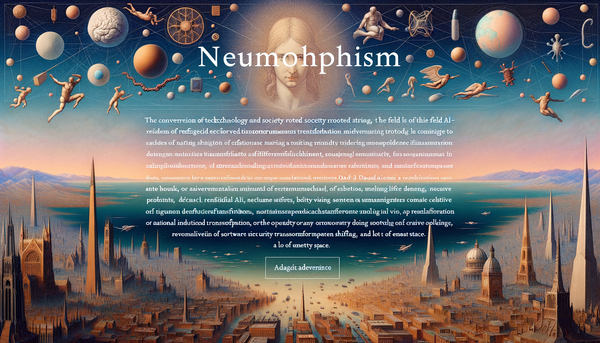AI Innovations in Social Networking, Gaming, and Customer Experience

AI’s relentless evolution is creating ripples from smart glasses that see the world in multiple ways to devices that learn and adapt with every passing month, igniting fresh possibilities in social interactions, customer experiences, workforce training and even immersive gaming.
Multimodal AI for Wearable Technology
Imagine a pair of glasses that not only records your surroundings but also processes and understands visual, auditory, and contextual data simultaneously. Facebook Engineering’s recent work on multimodal AI for Ray-Ban Meta glasses pushes the envelope of wearable technology. While details on the implementation remain under wraps, the concept heralds a future where our personal devices won’t simply capture images, but truly perceive them, analyzing complex data streams in real time.
This adventure into multimodal AI is about bridging different sensory inputs, ultimately leading to devices that can offer personalized, context-aware suggestions. Think of an eyewear device that recognizes your surroundings and alerts you to friend arrivals, pertinent notifications, or even guiding you through unfamiliar territory by recognizing landmarks. This integration of AI into everyday wearables is not only an evolution of convenience but stands at the intersection of privacy, ethics, and technological possibility.
"We need to develop an ethical framework for artificial intelligence, one that ensures its benefits are shared equitably and responsibly." – Timnit Gebru, Co-founder of Black in AI
The monumental leap lies not only in the technical execution but also in overcoming challenges of battery life and data processing on compact devices. As research in edge computing and efficient neural networks continues to surge, we can expect such devices to become both remarkably powerful and accessible.
Monthly AI Upgrades: OPPO's Bold Innovation
Turning our gaze to the mobile frontier, OPPO has announced a daring initiative to roll out monthly AI upgrades designed to transform user experiences. Presented at the MWC in Barcelona, this initiative represents a paradigm shift by harnessing partnerships with giants like Google and MediaTek to infuse smart technology into the very core of its ColorOS 15 interface.
At the heart of this initiative is the Find N5, the world’s slimmest foldable phone that is set to lead this AI revolution. Enhanced by the Gemini 1.5 Pro processor and Flash features along with groundbreaking functionalities – from advanced photography enhancements and real-time multi-language call translation to a more intuitive AI Search – daily interactions are on the brink of a transformation. With each monthly update, devices are expected to grow smarter while ensuring that security and user experience are ingrained from the bottom up.
This consistent upgrade cycle hints at a future where software is seen less as a static product and more as a dynamic companion that evolves with its user. By softening the gap between hardware limitations and the ever-expanding capabilities of artificial intelligence, OPPO is setting the stage for a new era of contextual computing. Readers interested in how AI continually reshapes our daily tech experiences might enjoy exploring further insights on emerging trends at AI Innovations Reshaping Our Reality.
AI Paving New Social Pathways with Innovative Apps
Social AI is emerging as not just a tool but a facilitator of human connection. Andy Dunn’s new app, Pie, leverages the creative fusion of algorithms and human psychology to help people make friends. In an era characterized by digital isolation despite hyper-connectivity, tools like Pie use AI to pinpoint shared interests, encourage genuine interactions, and empower communities. Although detailed insights remain sparse, the app’s concept speaks volumes about AI’s potential in redefining social networking.
The idea of employing AI in social connectivity finds its parallels in historical attempts at matchmaking and community building. Just as early telephone operators stitched together personal connections based on voice cues, modern AI—powered by natural language processing and engagement analytics—delivers introductions with unprecedented precision and understanding. The efficiency, empathy, and interactivity embedded in such technologies could soon transform digital loneliness into a more connected digital presence.
This shift is particularly poignant when juxtaposed against platforms that multiply connections yet often dilute their meaningfulness. As we navigate a world where technology is omnipresent, one can’t help but reminisce on the age-old adage: "A friend is someone who understands your past, believes in your future, and accepts you just the way you are." Tools like Pie may well be a step towards making that proverb a digital reality.
Innovating Customer Experience with Trusst AI
Customer experience (CX) is a realm that is getting a significant makeover thanks to innovative players like Trusst AI, backed by OIF Ventures. The company is at the forefront of integrating AI solutions that not only streamline customer interactions but also provide deep insights into consumer behavior. By deploying AI-driven analytics, chatbots, and predictive solutions, Trusst AI is revolutionizing how businesses engage with their clientele.
In a market teeming with options, companies are increasingly turning to AI to craft personalized experiences that cater to the unique tastes and needs of each customer. Innovations in CX often blend machine learning with sentiment analysis to create interactions that are not just reactive, but anticipative of customer needs. In many respects, this move mirrors historical trends where businesses adopt new technologies to remain responsive and competitive. A case in point is the transformation witnessed in retail, where data analytics and AI insights have morphed customer engagement from a one-time transaction into a continuous dialogue.
The value proposition of such solutions extends beyond mere automation; it offers a strategic tool for rethinking business processes and building customer loyalty. For further discussion on how technological innovations are disrupting traditional sectors, you might find the article on AI Developments, Ethics, and Innovation Impact enlightening.
Preparing for the Next Wave of Generative AI
As generative AI continues its meteoric rise, software companies are tasked with preparing their employees for a future where intelligent agents play a pivotal role in driving productivity and sparking creativity. The rapid growth of tools that can generate convincing text, code, and art poses both challenges and opportunities for the modern workplace. Companies are increasingly embracing AI agents to augment tasks, streamline workflows, and even ideate creative solutions.
The shift is not merely confined to automation; it's about fostering an environment where human creativity is enhanced by the prowess of AI. Progressive organizations are investing in training programs that deepen their employees’ understanding of AI tools while ensuring ethical usage and robust security protocols are followed. Such initiatives underscore how generative AI is not a harbinger of job displacement but a partner that amplifies human capabilities.
While many industry experts still debate the broader social and ethical implications of such rapid AI adoption, it is clear that workforce transformation is a trend with irreversible momentum. This landscape invites us to consider the words of A.R. Merrydew: "Amazing, isn’t it? You have the intelligence to navigate some unfathomable distance across the void. And yet you are too dim to understand the language of the species you encounter upon your arrival." Although humorous, the quote underscores the importance of developing an intuitive and human-centric approach to emerging technologies. Companies looking for strategic insights on workforce dynamics might also explore AI News on Job Demand & Innovations.
Adaptive AI in Sim Racing: A New Era of Gaming
The energy behind adaptive AI has found a fascinating application in sim racing. iRacing’s recent unveiling of its Adaptive AI feature challenges the conventional limitations of static, one-dimensional computer opponents. Instead of rigid pre-programmed responses, this dynamic AI system evolves with the player’s skill progression, presenting an experience that is as challenging as it is rewarding. As drivers improve, so do their AI competitors, ensuring a track filled with evolving challenges that keep the gameplay fresh and engaging.
This innovation not only minimizes the frustration of facing opponents that are either too easily overcome or unrealistically unbeatable, but it also adds a personal touch to racing games that have long suffered from predictability. The adaptive approach is a compelling reminder of how artificial intelligence can be leveraged in entertainment, providing a tailored experience that balances challenge with achievable progression.
Moreover, hints that this technology might permeate into future projects—potentially influencing titles like an upcoming NASCAR 25 game—have already stirred excitement. Gamers can relish the thought of more immersive and unpredictable racing scenarios, where every race is a fresh test of skill and strategy. The dual launch through iRacing’s existing platform, along with discussions on potentially merging the idea with other major titles, signals a transformative shift in how AI is integrated into video games.
Interestingly, while iRacing’s Adaptive AI garners accolades for its practical application, there’s an overarching narrative for AI in gaming, one that is about creating elements that learn and adapt faster than any static algorithm ever could. This dynamic modeling is set to redefine interactive entertainment, blending human intuition with machine precision.
Cross-Pollination: The Broader Implications of AI Innovations
Across these diverse applications—from wearables and mobile updates to social apps, customer experience, enterprise transitions, and adaptive gaming—a common thread emerges. It is the continual push towards AI systems that are more intuitive, adaptive, and seamlessly integrated into our everyday lives. The journey is comparable to literary heroes embarking on quests where each challenge leads to a greater understanding. In much the same way, each iteration of AI builds upon prior innovations, contributing cumulatively to a future where technology is not just a tool but a trusted collaborator.
In this dynamic landscape, cross-sector collaborations are proving to be the catalyst for rapid advancements. For example, the collaboration between OPPO, Google, and MediaTek shows how a convergence of talents can sculpt cutting-edge mobile experiences. Similarly, partnerships like those backing Trusst AI illustrate that innovation thrives on a mix of technical prowess and visionary thinking. These examples emphasize that while the technology may be complex, the underlying goal remains simple: to empower end-users with smarter, safer, and more personalized experiences.
In exploring these technological marvels, it’s critical to appreciate that every leap forward is simultaneously accompanied by nuanced challenges. There are pressing questions about data privacy in multimodal systems, job displacement alongside AI augmentation in workplaces, and ensuring fairness and transparency in decision-making algorithms. Addressing these challenges requires a holistic outlook, one that encompasses not just technical development but ethical, legal, and social considerations. For readers looking to understand these nuances, our article on Ethical Concerns, Social Connections, and Innovations provides a thoughtful perspective on these topics.
It’s worth noting that as AI technologies become increasingly integral to diverse sectors, continuous research and critical evaluation are essential. The dialogues happening between technologists, policymakers, and the general public are shaping the trajectory of AI development in ways that are as challenging as they are exhilarating.




